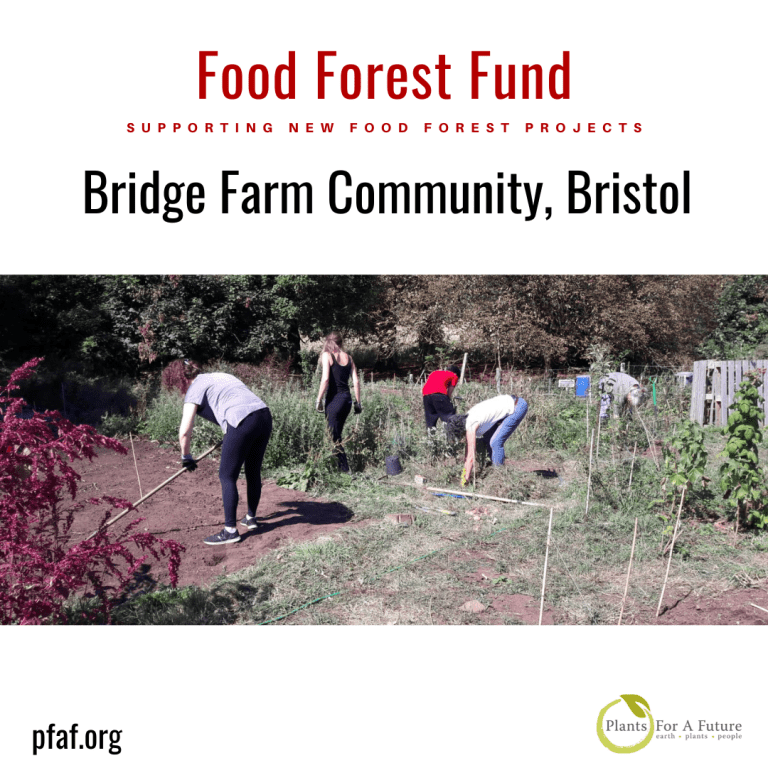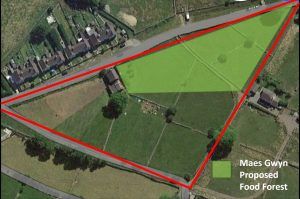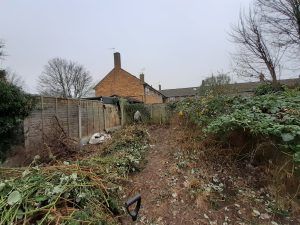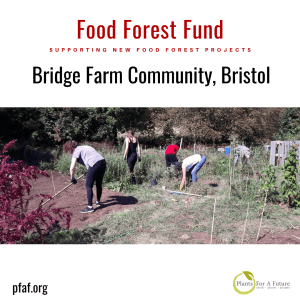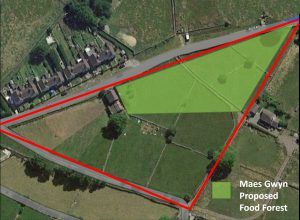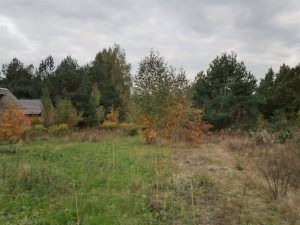
Progress Report by David Gearing, November 2022
Chris Marsh (PFAF Managing Trustee) and I first met Ana from Bridge Farm in May 2022 when Chris gave a talk on PFAF, including an introduction to our recently launched Food Forest Fund, to the Avon Organic Group in Bristol.
Subsequently Ana got in touch and submitted an initial grant application. A triangular plot of approximately 1500 square metres had already been identified on one corner of the land occupied by the Bridge Farm Community for what they termed a forest garden – we didn’t quibble about the terminology. The Community’s land is right next to the M32 motorway north of Bristol city centre, in Eastville.
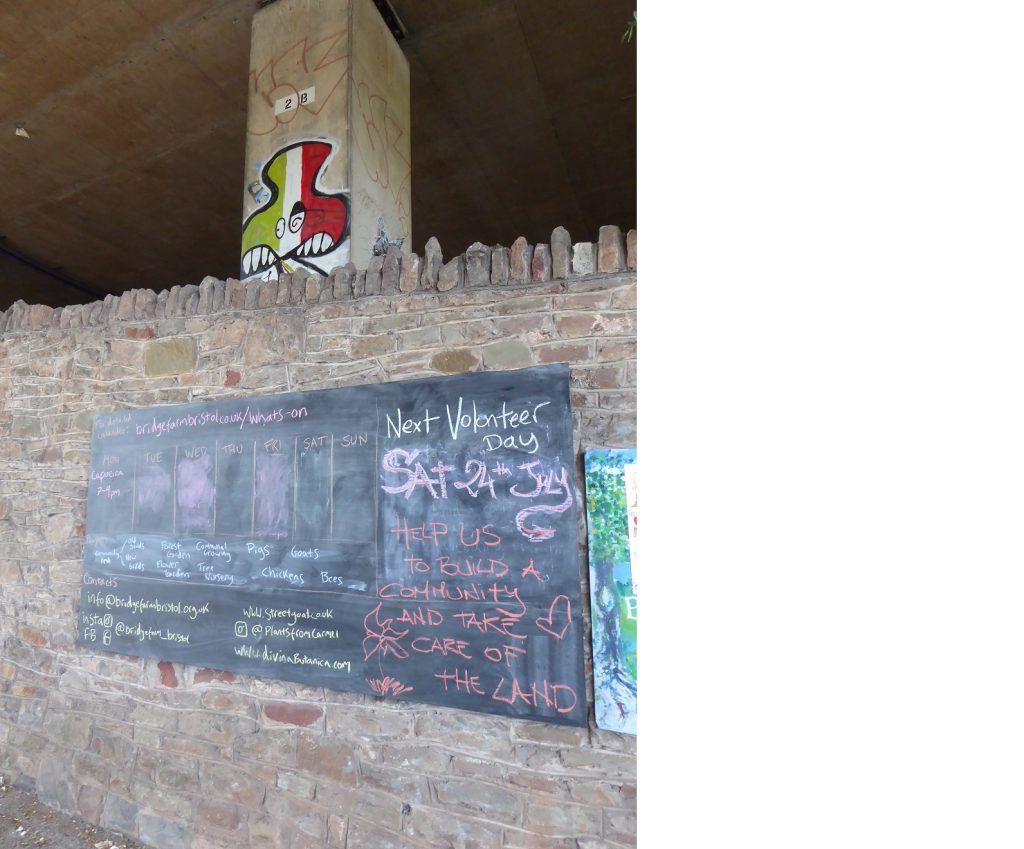
The overall aims for the forest garden project were described as ‘to create a space for using the land in a productive way: a space for growing, meeting, learning, teaching, relaxing and being in connection with the land’. In order better to understand the project Chris and I visited the site in July and discussed progress to date and plans to further develop what we have subsequently termed a food forest with Ana and Jules, the co-project leaders.
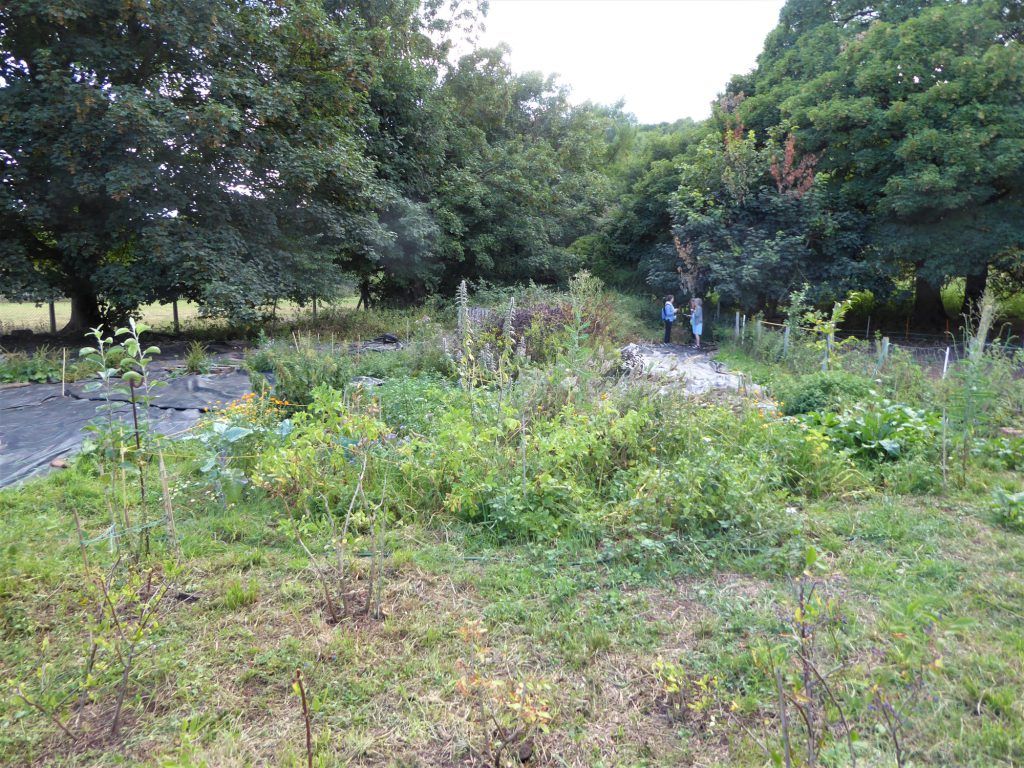
There are some mature trees along the southern boundary, and the site slopes down to a boggy area at the western end. They had already planted some fruit trees – different varieties of pears and apples together with quince, damson and medlar – along the eastern boundary, and hedging plants along the northern boundary fence They had let some pigs that are kept by other members of the Community in to clear unwanted vegetation from the central area of the plot, which they then covered in sheets of Mypex membrane to protect the soil until they were ready to plant there.
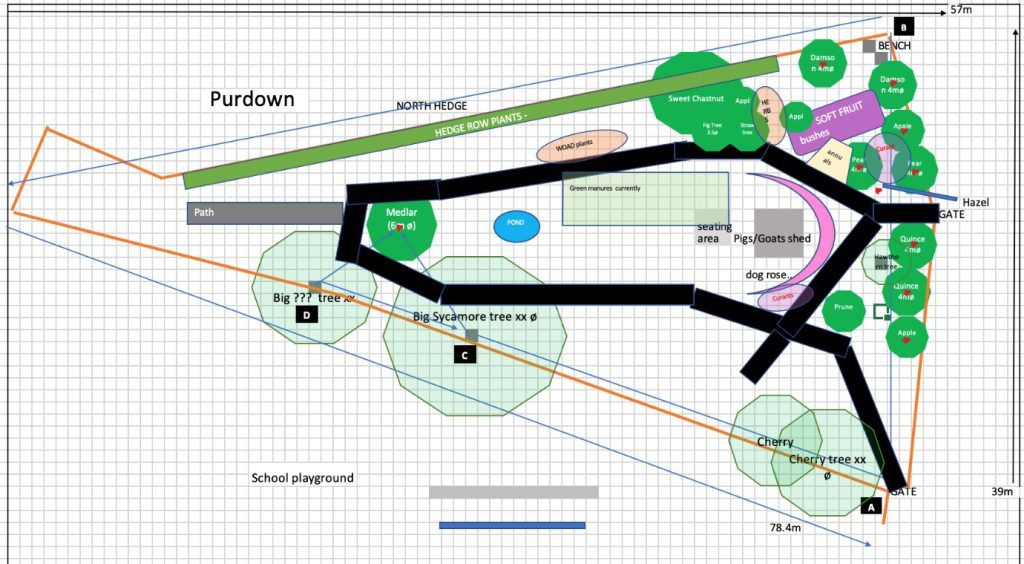
In August 2022 we awarded the team a grant towards the costs of the next stage of work on the Bridge Farm Food Forest: preparation of a detailed site plan, more weed elimination and control, constructing a pond and a small shelter, and obtaining and planting more edible perennials.
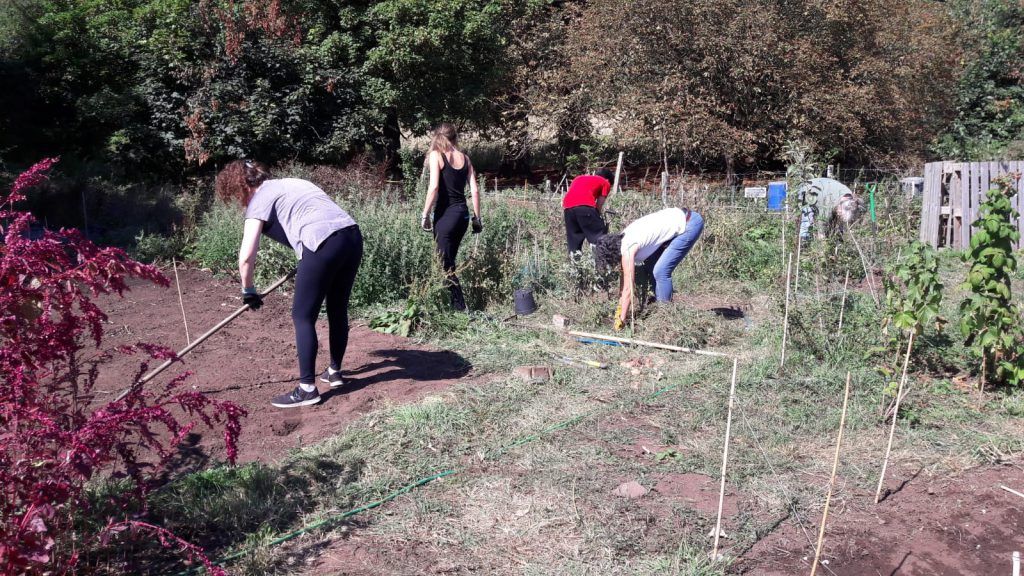
Much of the work is undertaken by the core group of volunteers as and when they can manage, augmented by an open volunteers’ day once a month when other people are encouraged to come along to help with whatever needs doing. By contacting other local groups and the relevant departments at local universities in the last few months they have made conscious efforts to expand the pool of volunteers. However, no-one involved with the food forest lives on site or visits every day. They have estimated that it will take two years to complete the construction of a pond and small shelter and the initial phase of plantings, and of course meanwhile effort will be required to look after the areas already planted. Green manure and salad leaves were planted in August and have come up successfully which gives the forest garden some produce to harvest and provides visual interest for visitors.
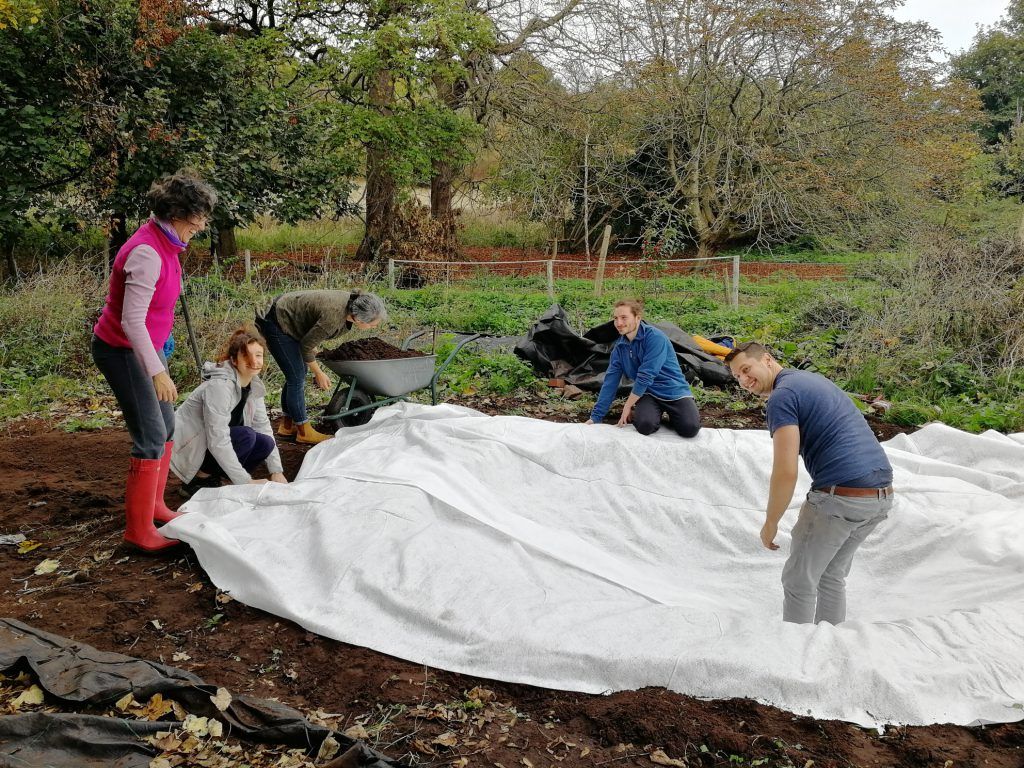
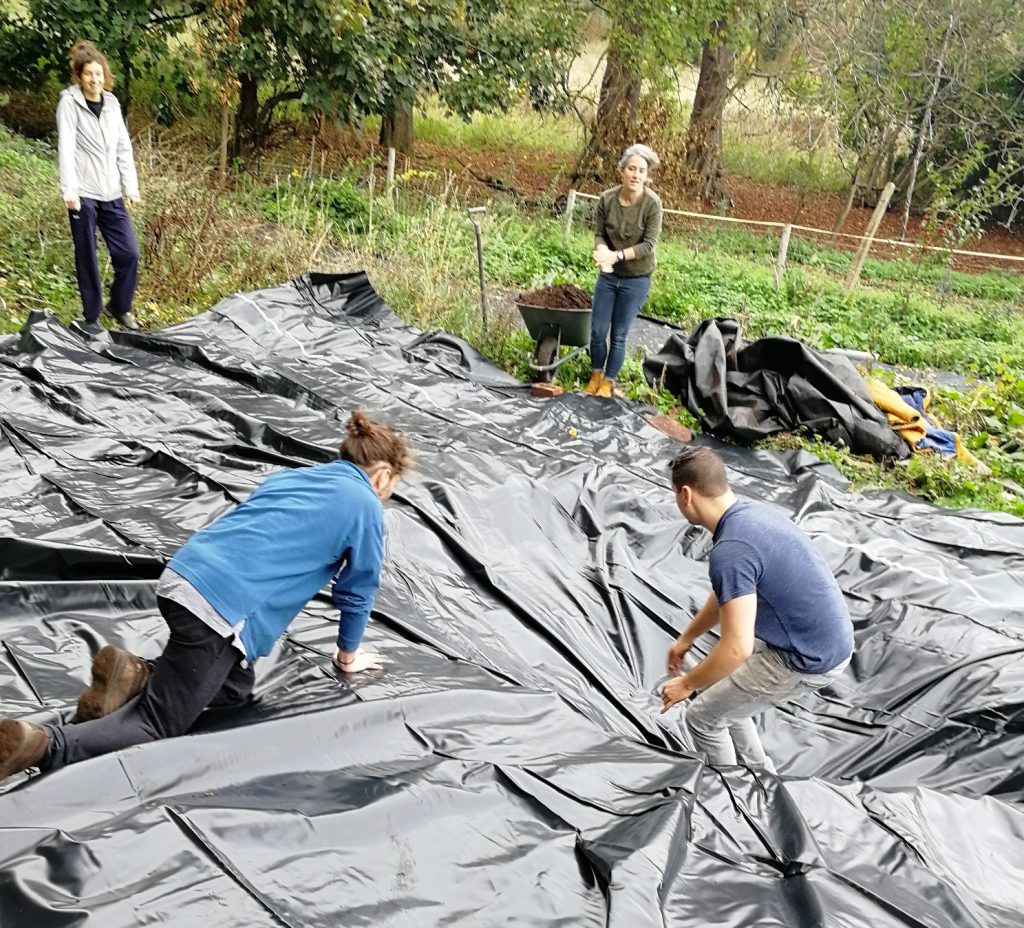
From PFAF’s perspective, we were keen that the Bridge Farm food forest was designed to focus on the herbaceous layer, aiming for a diverse mixture of non-woody edible perennials. This would extend the range of food crops which could be grown on the Bridge Farm Community site as a whole, most of which involves annual crops grown using traditional methods. This focus has been reflected in the list of plants purchased for planting in the food forest before the end of this season, which have included perennial salad leaf, Turkish rocket, Mountain Sorrel, Scurvy grass, sweet tea vine, Fool’s watercress, Buck’s Horn plantain, perennial Korean celery, Sea beet and perennial kale. Although small, the food forest site has good soil and a range of growing conditions, so it will be interesting to see what variety and density of edible perennials can be supported.
In September Ana and Jules visited the Agroforestry Research Trust to see three of Martin Crawford’s newer forest gardens in the Totnes area. They range in age from 2 to 9 years old and from 0.5 acres to 11 acres in size. It was an informative and fascinating tour of the work he has been doing and of particular interest as, like Bridge Farm, these are relatively new projects. They noted the many plants he was growing that should work well at Bridge Farm, including Wild Strawberries, Sea beet, Bush quince, Dwarf comfrey, Mediterranean Salt Bush, Day Lily, and Bamboos.
It appears that the grant PFAF provided from the Food Forest Fund and the detailed interest we have shown in progress has provided a stimulus to the project. We hope this can be sustained and that the team will be able to attract sufficient help to create a diverse and productive ecosystem on the site in the coming years.

